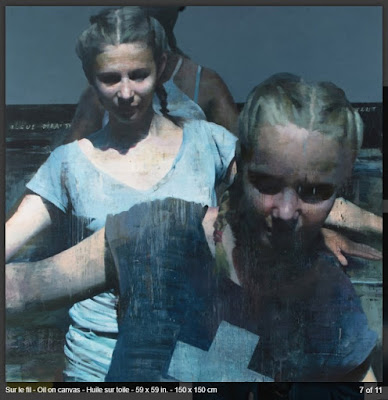The Olivier Waltman Gallery in France and Miami has got quite a good stable of artists who are both figurative and abstracted the same time. Up until a couple of months ago I thought that I was only interested in art that one would call “figurative” or “realist” because I just didn’t have the vocabulary to describe what I was looking for in our second fine abstract elements with realist elements.
While looking through YouTube for inspiration I came across a video that documented a show called “Disrupted Realism,” which was curated by Prof. John Seed for the Stanek gallery in Philadelphia. So far Seed has curated two shows at the Stanek gallery called Disrupted Realism and published a book by the same title.
One of the artists at the Olivier Waltman Gallery named François Bard is an artist that I admire whose work inhabits the space between realism and abstraction. In addition to this Bard’s work also has a strong sense of subject matter based on iconic imagery. Bard actually describes his work as “iconic” in that it borrows elements from religious imagery, political imagery, and cinema. Most obvious one is this painting based on the film “Chinatown.”
If you visit the website for the gallery they have extensive videos, interviews, and texts in which the artist discusses his work and describes it (in French) in some complex almost intimidating language. Although I really love the work, sometimes I have trouble with art writing that does this.
 |
When you boil down all of the information that you come up with in Bard’s work is painting that’s based in realist observation that combines a knowledge of art history and popular culture to make images that sort of “pop” in the same way that really good images on Tumblr and Instagram do. The main difference between these paintings and things experienced on a screen are that the paintings themselves do stuff that paintings can only do. In some of the work there is a playing with the materials and the improvisation that happens when paint is applied to paper or canvas.
The way in which materials are handled is a big part of the joy of looking at François Bard’s paintings.










No comments:
Post a Comment